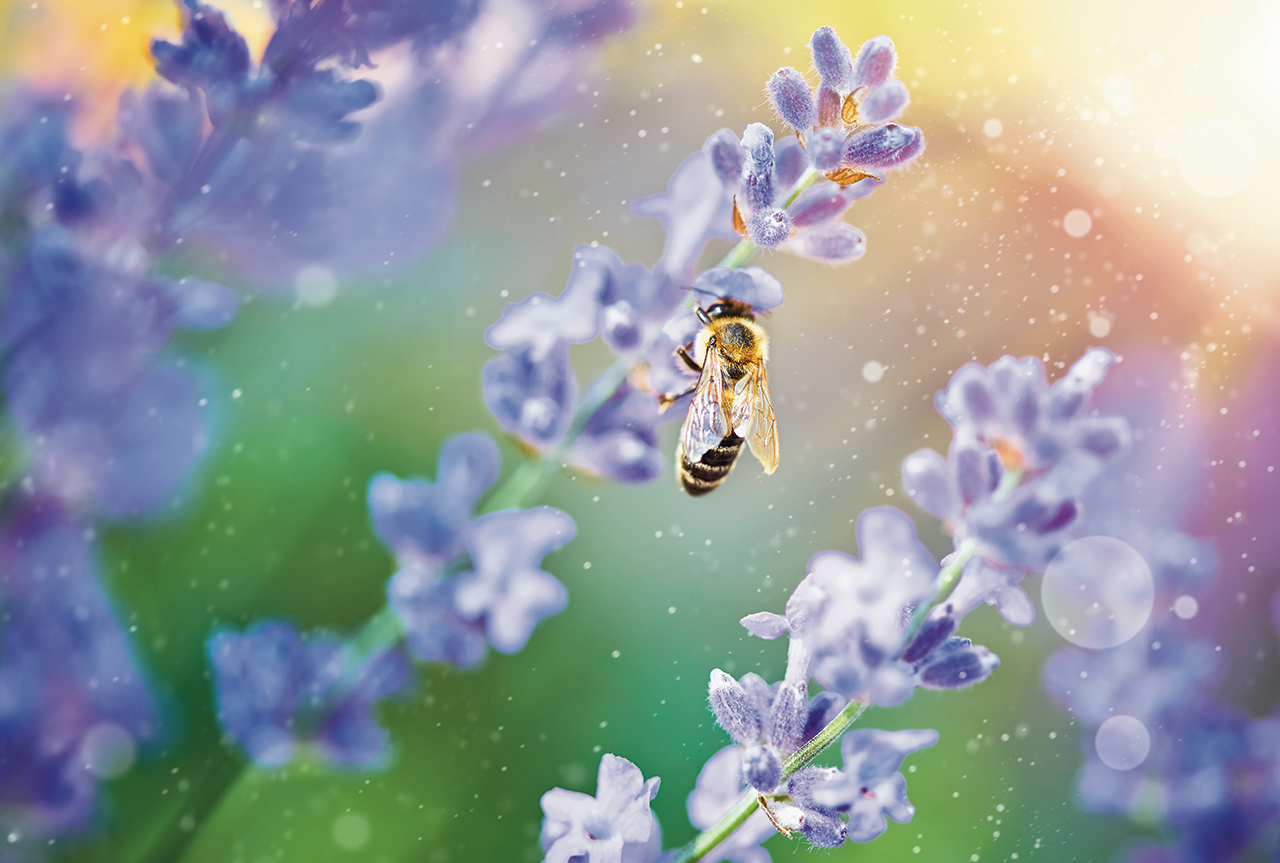Why are we running out of bees? What would be the impact of a world without them?
We often think of bees based on what they do for us. If we are asked to think of bees, honeybees and the sweet sticky elixir harvested from them usually come to mind. Worries about honeybees began with mysterious disappearances of bees from many hives in 2006. The term Colony Collapse Disorder (CCD) was coined, and although 2006–2007 was a high watermark for CCD, it hasn’t gone away. CCD is part of a trend of colony die-offs over decades. Each year about 30 percent of honeybee colonies are lost.
Appears InBut, there is much more to bees than the honeybee. In fact, honeybees aren’t even native to the U.S. Managed colonies were introduced in the 1600s. There are over 4,000 native North American bee species. They come in different sizes and colors, and most don’t live in colonies. We should also worry about these bees. For example, rusty patched bumblebee numbers have dropped 95 percent, and it is not found in most of its previous haunts.
Without bees, the landscape and our supermarket shelves would be very bare. Many plants rely on native bees to reproduce. Without bee pollination, many flowering plants would also be lost. What we might really notice is our plates of food. Managed and native bees add billions of dollars yearly to the economy. They help produce apples, blueberries, zucchinis, almonds, tomatoes, and more. Even if the fruit and vegetable aisle isn’t for you, remember bees pollinate plants used to feed animals. It is estimated that one in every three mouthfuls of food depends on pollinators, and many of these pollinators are bees.
Why are our native and managed bees in trouble? Scientists, including my group, are still investigating. But, habitat loss, climate change, pesticides, and disease are all bad for bee health. And of course, bees aren’t just dealing with these problems one by one. Bees are faced with a barrage of multiple threats, which only makes the problem worse. To protect our bees and the services they provide, we need to work together to reduce the issues they face.
Benjamin Sadd, assistant professor, School of Biological Sciences
Our top faculty experts answer questions from the Illinois State University community in the “Ask a Redbird Scholar” section. To submit a question, email Kevin Bersett at kdberse@IllinoisState.edu or tweet it to @ISUResearch. Chosen questions and answers appear in each issue of Illinois State’s new research magazine, the Redbird Scholar. To read other “Ask a Redbird Scholar” posts, visit IllinoisState.edu/RedbirdScholar.



Oh come on! He didn’t even mention the varroa mite.. by far the largest contributor.